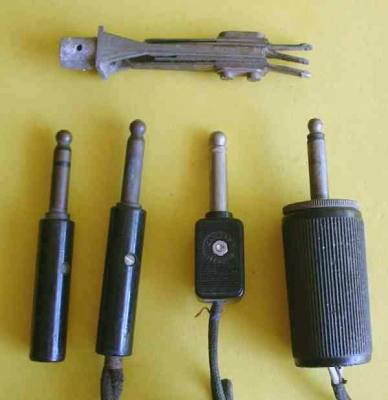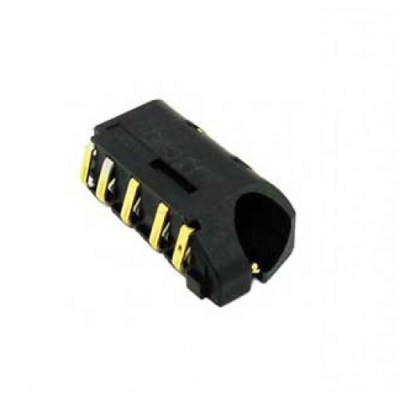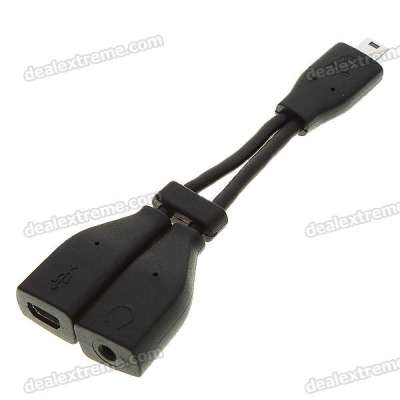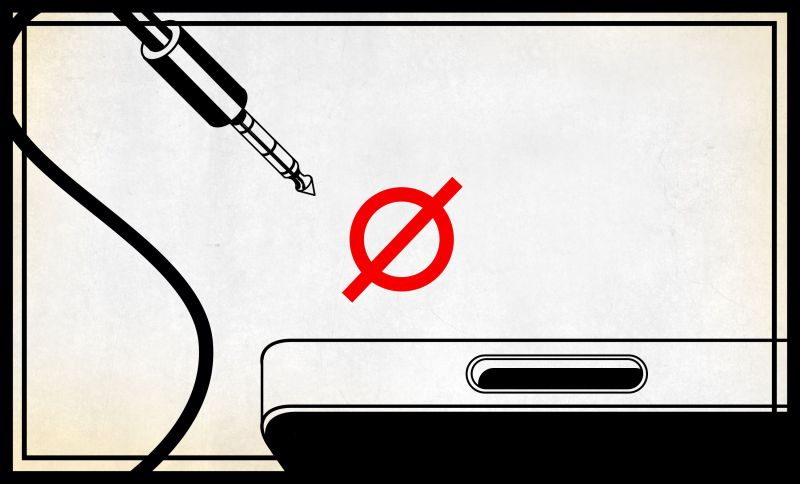If you’ve watched the tech news these last few months, you probably have noticed the rumors that Apple is expected to dump the headphone jack on the upcoming iPhone 7. They’re not alone either. On the Android side, Motorola has announced the Moto Z will not have a jack. Chinese manufacturer LeEco has introduced several new phones sans phone jack. So what does this mean for all of us?
This isn’t the first time a cell phone company has tried to design out the headphone jack. Anyone remember HTC’s extUSB, which was used on the Android G1? Nokia tried it with their POP Port. Sony Ericsson’s attempt was the FastPort. Samsung tried a dizzying array of multi-pin connectors. HP/Palm used a magnetic adapter on their Veer. Apple themselves tried to reinvent the headphone jack by recessing it in the original iPhone, breaking compatibility with most of the offerings on the market. All of these manufacturers eventually went with the tried and true ⅛” headphone jack. Many of these connectors were switched over during an odd time in history where Bluetooth was overtaking wired “hands-free kits”, and phones were gaining the ability to play mp3 files.

The humble phone jack may well be the oldest electrical connector still in common use. The original ¼” (6.35mm) jacks were developed back in 1878. They were used as patch connections in manual telephone switchboards. Two conductor connectors had a Tip and a Sleeve (TS). Three conductor connectors had Tip, Ring and Sleeve (TRS). These names are still used in the telephone industry for identifying the positive (tip) and negative (ring) wire of a POTS line. Add a fourth conductor, and you’ve got TRRS.
The ⅛” (3.5mm) miniature jack and the 3/32” (2.5mm) sub-miniature versions appeared in the 1960’s on transistor radios. In 1979, the Sony Walkman made the stereo ⅛” phone jack a common consumer standard.
As connectors go, they’re not half bad. Phone jacks are orientation agnostic, and can rotate without breaking connection. They have become an issue in phones though. Thinner and thinner phones have created lower profile sockets. With less plastic in the socket body, these jacks become more prone to breakage – especially when subjected to heavy use.

The ⅛” hole is a highway to a phone’s internals for dust, water, or anything else you don’t want getting into your phone.
So if phone companies are going away from the classic ⅛” phone jack, what options do we have?
- USB Type-C: USB-C allows for digital audio at 44 or 96 kHz using a headphone mounted DAC. The connector also allows for analog stereo audio through the sideband pins.
- Lightning: Apple’s Lightning supports digital audio at 48 kHz, but does not support analog audio.
- Bluetooth: These days every phone has the option of Bluetooth audio, however Bluetooth has a reputation for terrible audio quality.

Potential problems:
- DRM: With Apple, the biggest issue is going to be DRM. Lightning connector devices must pass Apple’s MFI tests. Apple has gone as far as specifying which DACs will be allowed in headphones. This will only serve to drive costs up.
- Charging: How do you charge your phone if you’ve got your headphones plugged in? I’m sure there will be stackable connectors, or adapters with a port for charging – which leads us to…
- Dongles: Adapters, dongles, call them what you like. There will be USB-C to ⅛”, Lightning to ⅛”, in all shapes and sizes. Just one more adapter to carry around (and lose).
So I pass the question on our readers: How do you like to connect your headphones? Would you buy a smartphone without a headphone jack? Let us know down in the comments!
















For some reason I keep thinking about this video:
https://www.youtube.com/watch?v=KHZ8ek-6ccc
I know it is not a real video, but it is so funny because it scratches the surface of reality.
That’s going into the ‘favorite videos’ folder. My eyes are actually wet from laughter. :D
There’s more than just headphones that user that jack. The only good thing about removing the 1/8″ jack is no more cheap selfie sticks. Other than that, it’s all negative.
Why not two USB-C ports to solve the charging and listening problem?
Something that annoys me is that no-one seems to consider the environmental impact of these types of design decision. Now, instead of having one DAC and associated circuits powering all peripherals, every peripheral will either need it’s own DAC or a “smart” wire. More electronics for the landfills. Fantastic.
Suuuure, I would love nothing more than having to charge TWO pieces of plastic with shitty battery lives daily instead of just the one. Hell no: no jack, NO SALE.
The rumor needs one crucial detail to gain traction.
“Beats rumored to have deal with apple to use only apple headphone jack.”
Now it’s not about if YOU would buy the phone, but would all the idiots that bought beats buy the phone?
I would love to see a future where almost all connectors are USB-C. It would remove the bundle of cables that you require to charge stuff. If everything uses a type C connector, it would be feasible to daisy-chain non-similar things (like headphones and a video output) together. Wireless can be good, but I personally like the dependability and ease-of-use of hardwired connections. Also, if type C is used, It allows cheap headphones to use the analogue output of the phone (not requiring a separate DAC and amp) and better quality devices to have their own DAC and get power from the phone.
The new XKCD phone has *12* headphone sockets, so it appears as if news of the headphone socket’s death is a little pre-mature.
http://imgs.xkcd.com/comics/xkcd_phone_4.png
I did scan thru the comments (briefly) and did not see this – but if I missed it – Sorry.
I use a Iphone6 (work supplied) and I also use a blood glucose monitor (Dario) that plugs into the headphone socket.
Works great – and I am very happy.
Tiny bit concerned if the new Iphone (which I will probably be issued) does not heave a headset jack…. what happens with the Dario?
You use one of the myriad of alternative phones on the market with a headphone jack.
Yay! Another special cord to buy! Yay!
I’m not interested in dongles or proprietary connectors and won’t use them.
If the glued-in battery is any indication, Apple is liable to succeed at selling phones without the headset jack. Now that all the other companies are jumping on the sealed-in battery bandwagon, The headset jack is next up to bat. This debate reminds me of the replaceable vs permanent battery debate and we all saw how that worked out. Increasingly, you have no choice but to get a phone with a knowable finite lifespan.
This is interesting, some valid points in the discussion for staying with the 3.5 mm – 1/8th jack plug! It is a good connection in my opinion, but it is causing a lot of failure. I am looking in solving some issues with the 3.5 mm – 1/8th jack for some years now. I figured that the forces on the jack plug create a moment around the jack in the phone. So we made a plug where the connection with the wire is stored inside the plug, leaving everything flexible outside.
We call it JackSavior, what do you guys think about such a solution?
I just bought two phones: a Moto G4 Plus and the HTC M10. One of the reasons I went with these was the presence of a headphone jack.